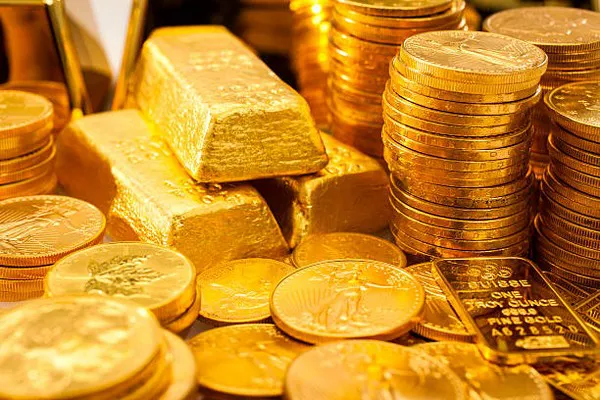Gold has long been a symbol of wealth and a critical component of the global economy. Understanding its price fluctuations over the years provides valuable insights into economic trends, geopolitical events, and changes in investor sentiment. This article will explore the price of gold in 1970, the factors that influenced its value, and the broader economic context of the era.
Historical Background of Gold Pricing
The Gold Standard Era
For much of the 19th and early 20th centuries, many countries operated under the gold standard, where the value of currency was directly linked to gold. This system established a fixed price for gold, which contributed to price stability. However, the gold standard began to unravel during the Great Depression, leading to a shift in how gold was valued.
The End of the Gold Standard
By the late 1960s, the Bretton Woods system, established after World War II, was facing significant challenges. This system fixed the value of the U.S. dollar to gold, allowing other currencies to be pegged to the dollar. However, rising inflation and balance of payments issues prompted a reevaluation of this arrangement.
In 1971, President Richard Nixon officially suspended the convertibility of the dollar into gold, marking the end of the Bretton Woods system and transitioning to a fiat currency system. The effects of this decision would resonate throughout the 1970s and beyond.
The Price of Gold in 1970
Average Gold Price in 1970
In 1970, the average price of gold was approximately $36 per ounce. This was a significant increase from previous years, reflecting growing inflation and uncertainty in the global economy.
Yearly Fluctuations
The price of gold fluctuated throughout 1970, influenced by various economic and geopolitical factors. Key events that impacted gold prices included:
Inflation Rates: The inflation rate in the United States began to rise in the late 1960s, leading investors to seek safe-haven assets like gold.
Geopolitical Tensions: Ongoing conflicts, such as the Vietnam War, contributed to economic uncertainty, prompting increased demand for gold.
Market Sentiment: As confidence in the U.S. dollar began to wane, more investors turned to gold as a hedge against currency risk.
Factors Influencing Gold Prices in 1970
1. Economic Conditions
The U.S. economy in the late 1960s and early 1970s was characterized by high inflation and slow growth, known as “stagflation.” This economic climate drove many investors to turn to gold, traditionally seen as a hedge against inflation.
2. Monetary Policy
The Federal Reserve’s monetary policy during this period also played a significant role in shaping gold prices. As the Fed grappled with inflation, its decisions affected interest rates and currency stability, leading to fluctuations in gold demand.
3. International Relations
Geopolitical events significantly influenced gold prices. The Vietnam War and tensions with other countries led to economic uncertainty, prompting investors to seek the relative safety of gold.
4. Market Dynamics
As more individuals and institutions began to invest in gold, the dynamics of supply and demand shifted. Increased demand for gold jewelry, coins, and bullion further contributed to rising prices.
The Impact of Gold Prices in the 1970s
The Shift in Investor Behavior
The rising price of gold in 1970 marked the beginning of a significant trend that would continue throughout the decade. Investors increasingly recognized gold as a valuable asset class, leading to a shift in investment strategies.
The Gold Bull Market
The early 1970s saw the beginning of a gold bull market, which would peak later in the decade. This period was characterized by substantial price increases, driven by continued economic uncertainty, inflation, and geopolitical tensions.
Changes in Government Policy
As gold prices rose, governments around the world began to reconsider their monetary policies. The U.S. government, in particular, faced pressure to address inflation and stabilize the economy, which would eventually lead to the implementation of new economic policies.
The Legacy of Gold Prices in 1970
Long-Term Trends
The price of gold in 1970 laid the groundwork for significant changes in the global economy and financial markets. The shift away from the gold standard and the rise of fiat currencies prompted a reevaluation of gold’s role in the financial system.
Continued Importance of Gold
Despite the changes in monetary policy, gold remained a crucial asset for investors. Its value as a hedge against inflation and economic uncertainty continued to grow, solidifying its position in investment portfolios.
Modern Context
Today, gold prices are influenced by many of the same factors that affected them in 1970. Economic instability, inflation, and geopolitical tensions continue to drive demand for gold as a safe-haven asset.
Conclusion
The price of gold in 1970 was a reflection of the broader economic and geopolitical landscape of the time. Averaging around $36 per ounce, gold prices were influenced by rising inflation, economic uncertainty, and changing investor sentiment. This period marked the beginning of a significant shift in the perception of gold as a valuable asset, setting the stage for the bull market of the 1970s and shaping the role of gold in the global economy for decades to come.
Understanding the dynamics of gold pricing during this era provides valuable insights into the factors that continue to influence gold’s value today. As investors navigate an ever-changing economic landscape, the lessons learned from the price of gold in 1970 remain relevant and instructive.
You Might Be Interested In
- The Price of Gold in 1971: A Historical Perspective
- What is Gold Price in UK Today(October 21)
- What is the Price of Gold in India Today (October 21)


